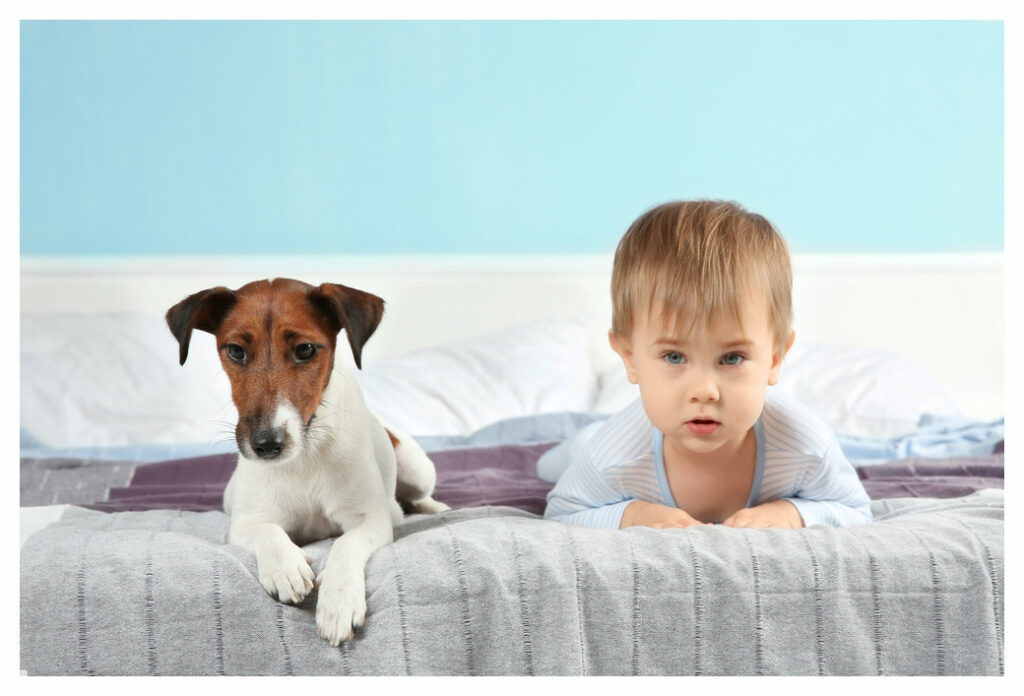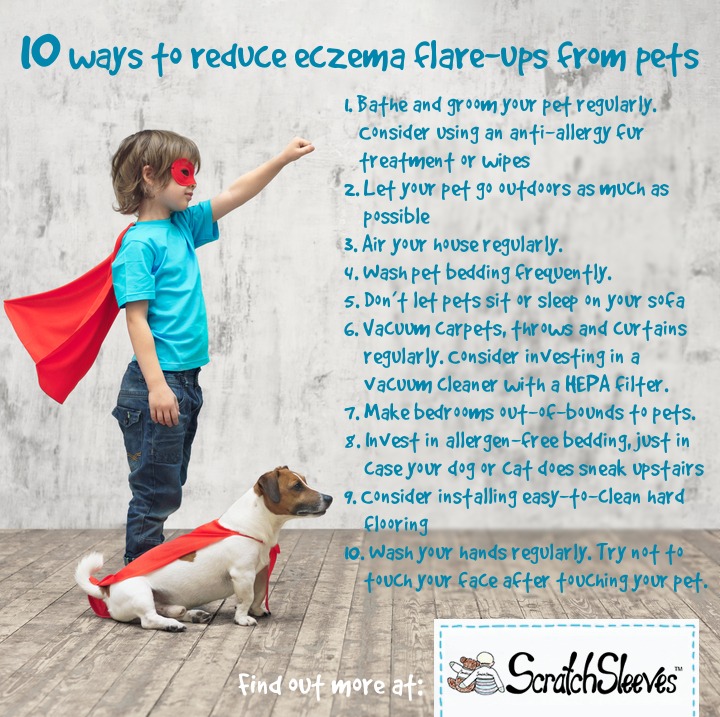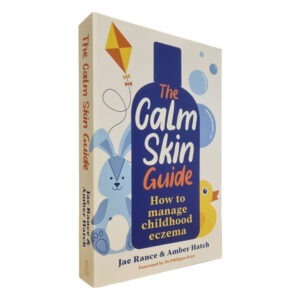Baby eczema triggers #4: Can my eczema child have a furry pet?



Most children dream of keeping their own pet, it’s one of the pleasures of childhood. It’s also a great way to learn about responsibility. However, eczema does complicate the issue as no parent would want to introduce a pet which could trigger a flare-up. Snakes, reptiles and fish are your safest bet, but perhaps not the most appealing! So, if your eczema child would like a pet of the small and furry kind, how do you decide what to do?
Which pets can trigger eczema?
Any animal with fur has the potential to trigger eczema. It doesn’t matter whether your child wants a dog, cat, rabbit or rodent, the risk is the same. While the fur of these animals is often blamed for causing eczema, it’s actually the proteins in their saliva and the ‘dander’ which is a problem. Dander is small flecks of skin which the animal sheds, a bit like dandruff in humans. Saliva, fur and dander can be a problem to people who suffer from asthma or rhinitis too. While not all eczema is aggravate by pets, is it a very common trigger for flare-ups.
Do hypoallergenic pets exist?
The short answer is ‘no’ because all have the potential to transfer saliva, fur and dander to the eczema sufferer. However, to reduce the risk of problems, small animals can be a better choice, simply because their size means they shed less hair and dander than big pets. Hamsters, mice and guinea pigs win on this front, as do cats and small dogs.
Many families which include a child with eczema are able to keep a furry pet by choosing the breed carefully. Labradoodles were bred specifically to be low allergy guide dogs. Poodles, Schnauzers and Bichon Frises are also thought to be suitable because they are relatively small breeds and they shed less hair.
Cat breeds which have short, low shedding hair include Siberian, Balinese and Russian Blue are thought to cause lower levels of allergic reactions. The Siberian and Balinese breeds in particular are thought to have less of the ‘Fel D1’ protein in their saliva which is known to be problematic to people with allergies. You can get a few hairless cat breeds. However hairless breeds have extra needs and perhaps not the cute, cuddly pet your family is after!
- Top tip. Regardless of the breed, make sure that the eczema sufferers in your family spend some time cuddling your potential pet before you commit to taking it on. That way you’ll know if you need to be prepared to deal with allergies or, indeed, if allergy is too severe. All reputable breeders and animal shelters understand the problem of allergies and will be more than happy to accommodate you.
Problems vs benefits
The risk of worsening your child’s eczema has to be balanced against the benefits that a pet can bring to a family. As long as flare-ups can be managed can minimised, the introduction of a pet can serve to show your child that eczema doesn’t have to rule their lives and dictate what they can and can’t do.
On the plus side, a pet is a good way to teach responsibility, especially if your child has to help to exercise it, feed it or help to keep its cage clean.
Furthermore, it’s well-known that a pet can have a calming influence on a household. Because a pet is ‘neutral’ it can act as a non-judgemental friend to your child (and other members of the family). Dogs are known for their loyalty and, with a bit of love and affection, will always be your son or daughter’s best friend through good times and difficulties.
You may find it helpful to read our article on building confidence in your child with eczema

Building resistance
If you are serious about introducing a pet to your home, it’s worth bearing in mind that some children will build up resistance to pet-induced eczema.
Our cat, Jemima, was already in her dotage when our son was born and we don’t think she triggered his initial bout of eczema (that was down to parbens). So last year we welcomed a new cat into the family. While Max did have an unexpected flare-up of his eczema (and allergic rhinitis), with consistent and plentiful emollient applications his skin has settled again. For us this certainly indicates that some children can build up at least a level of resistance. Max and Happy, our new cat, are best buddies. And Max is determined that he will manage his eczema so that Happy can stay.
Of course, one of the benefits of building up a bit of resistance in your own home is that your child will hopefully be less susceptible to flare-ups when visiting friends who also keep pets. This has definitely been the case for Max.
Plus, you can help your child learn to manage eczema themselves by making them aware of ways to reduce problems, and getting them into a good hand washing/emollient applying routine.
Current research into pets and eczema
There have been a number of research projects looking at the relationship between pet ownership and the development of eczema in young children. These studies found that children with clinically identified allergies to dogs but who lived with a dog were almost 4 times less likely to have eczema at age 4 years than those who hadn’t. These children had developed a resistance to dog allergens and dog ownership significantly reduced their risk of eczema associated with dog allergies.
Unfortunately the same isn’t always true for cats. There appears to be positive association between exposure to cats and eczema among children with filaggrin mutations (the genetic mutations which are most strongly related to the occurrence of eczema and asthma). This suggests that children with a cat allergy are not always able to build up a resistance to these allergens and are more likely to suffer from cat induced eczema flare-ups. In contrast, dog ownership does not appear to increase the risk for eczema associated with filaggrin variants. So, if you have both eczema and asthma in the family and your child is allergic to cats, it’s probably better to chose a dog rather than a cat. You can read more in the Journal of Paediatrics, here.
10 ways to reduce eczema flare-ups from pets
- If you have a dog, bathe and groom it regularly. Groom it outside to prevent unnecessary contact with fur and dander. It may be worth trying an anti-allergy shampoo. Some cats, especially Bengals, are also happy to be bathed. Alternatively, anti-allergy wipes or lotions can be effective.
- Keep your pet outdoors, where appropriate. Outdoor animals tend to be less allergenic than indoor animals. This is because they pick up bacteria on their coats which degrades the allergens.
- Air your house regularly. Consider an anti-allergen room spray to get rid of airborne allergens.
- Wash or replace pet bedding regularly.
- Don’t let pets sit or sleep on your sofa or near cushions.
- Vacuum carpets, throws and curtains regularly to keep them fur and dander-free. Consider investing in a vacuum cleaner with a HEPA (high efficiency particulate air) filter. This will remove more dust and dander than a standard version.
- Make your bedrooms out-of-bounds to pets.
- Invest in anti-allergen, just in case your dog or cat does sneak upstairs!
- It’s a bit of an investment, but consider installing wood floors – they’re easier to clean than allergen-trapping carpets or rugs.
- Encourage your child to wash their hands regularly and not to touch their face.
- Bonus tip: allergen reducing cat foods are starting to appear on the market. The work by reducing the Fel D1 protein in the cat’s saliva by up to 47%.
Here at ScratchSleeves, we don’t just share our experiences of bringing up an eczema child and favourite allergy-friendly recipes, we also manufacture and sell our unique stay-on scratch mitts and PJs for itchy babies, toddlers and children. We now stock sizes from 0-adult years in a range of colours. Visit our webshop for more information.
The Calm Skin Guide
Love our blog? It's also available in book format with:
- First hand accounts from parents & medical professionals
- Easy navigation
- Comprehensive index
- Additional material
Signed copies available at no extra cost
Written by:
Interesting article? Don't keep it to yourself...
Read next...
You may also find helpful...
Quick buy


Multi Buy Discount

Spend between £30 - £60 and save 5%
Spend between £60 - £120 and save 10%
Spend over £120 and save 15%
Discount automatically applied at checkout
No Quibbles Guarantee

ScratchSleeves abide by a no quibbles guarantee.
Free UK Postage

Free packing and postage on all UK orders. For overseas orders to Europe postage is from £3.50, to USA is £6.50 and to the rest of the world, from £3.75.







